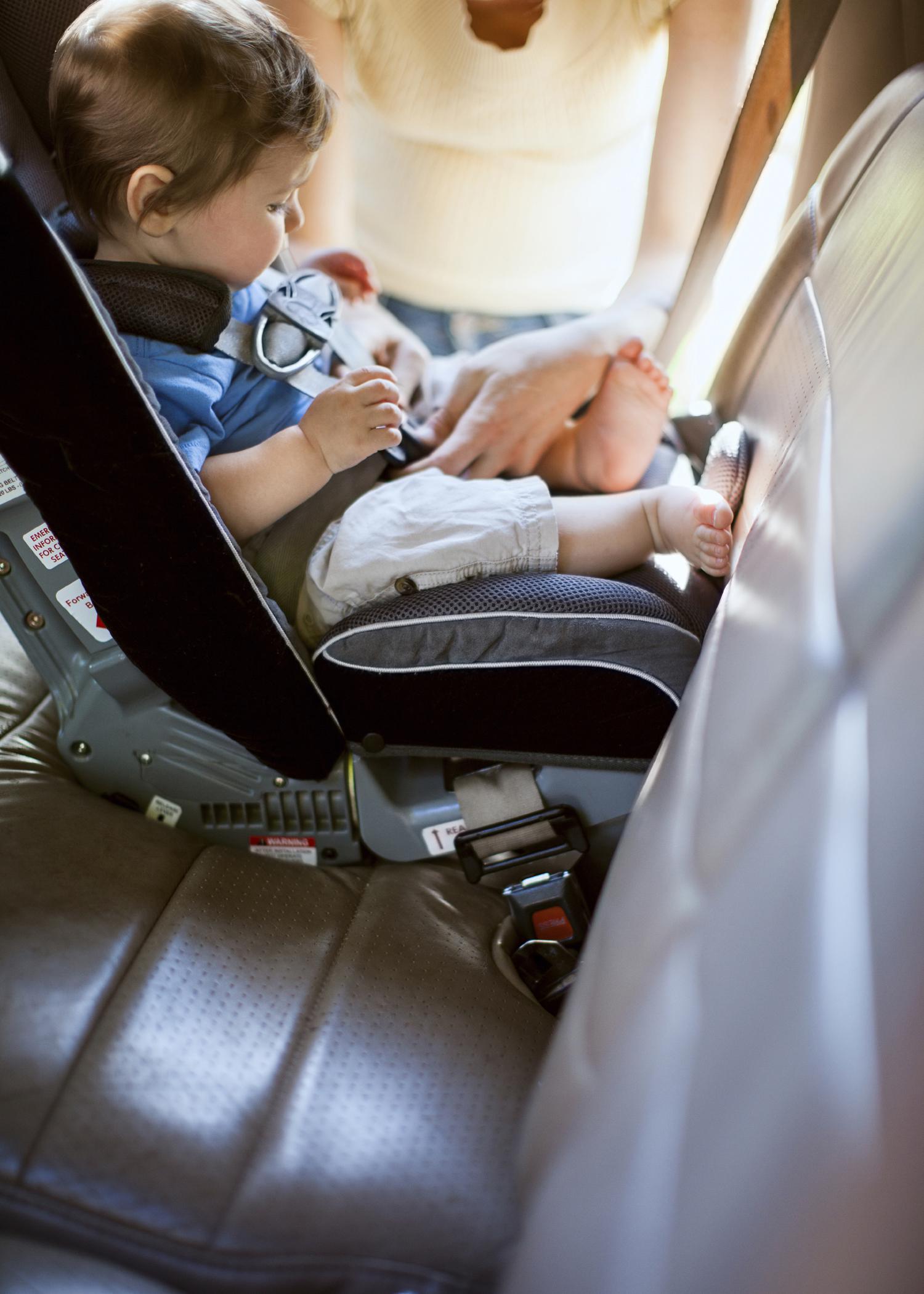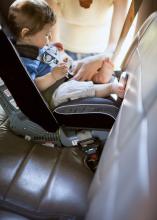Information Possibly Outdated
The information presented on this page was originally released on August 5, 2015. It may not be outdated, but please search our site for more current information. If you plan to quote or reference this information in a publication, please check with the Extension specialist or author before proceeding.
Buy car seats based on children's age and size
RAYMOND, Miss. -- Parents know car seats are essential for children’s safety, but the task of choosing and installing one can be overwhelming for even the most savvy moms and dads.
“There are many different types of car seats, and parents should do a little research before going to the store,” said Lydia Bethay, associate director of the Mississippi State University Extension Service Early Learning Network. “The most important thing is to get the right seat for your child and to use it properly every time you get in the car, even on short trips.”
The latest Mississippi State Department of Health statistics, released in 2012, indicate that 90 percent of Mississippi children were restrained improperly, increasing the risk of injury and death in accidents.
The National Highway Transportation Safety Administration and the American Academy of Pediatrics recommend that parents choose and install car seats based on their child’s age, weight and height.
These groups say children should ride in rear-facing seats from birth to 3 years old. Four- to 7-year-olds should ride in a forward-facing seat with a harness and tether. Once children reach the manufacturer’s height and weight limit for forward-facing seats, they should transition to booster seats until they are tall enough to properly fit in adult seat belts.
Seat types include rear-facing, forward-facing and boosters. Manufacturers also make three different styles of seats that combine the different types. These are called all-in-one, convertible and combination seats, which can transition as a child grows. All-in-one seats transition from infant seat to booster seat. Convertible seats change from rear facing to forward facing. Combination seats convert from forward-facing seats to booster seats.
“Some manufacturers allow seats to be used in a forward-facing manner once the child is 1- to 2-years-old,” Bethay said. “However, it is best to keep infants and toddlers rear-facing for as long as possible.”
Look for a seat that is made to face the back of the vehicle for a longer period of time than an infant seat, Bethay said. Manufacturers’ weight limits on these seats are between 40 and 50 pounds.
“Make sure the manufacturer specifies that the seat can be used in the rear-facing position,” she said. “You can’t turn just any seat around to face the rear.”
All seats on the market are approved by the National Highway Transportation Safety Administration, but parents should ensure the seat they choose fits in their vehicle for maximum safety, Bethay said.
“The same seat that fits in a van or sedan may not fit in a pickup truck,” she said. “Research the different brands and try them out in your vehicle to be sure they can be installed properly.”
Nikki Johnson, a certified national child passenger safety technician with the Mississippi State Department of Health, said parents should refer to the specific car seat manufacturer’s instructions and read the vehicle owner’s manual on how to install the car seat using the seat belt or lower anchors and a tether.
“Every car seat and vehicle is different,” Johnson said. “It is important to follow all instructions carefully. All car seats and booster seats should be installed in the back seat. The seat must be secured tightly so that it does not move more than 1 inch from side to side or front to back when pulled at the belt path.
“If the seat is a rear-facing seat, make sure it is installed at the correct recline angle. If it is a forward-facing seat and has a tether strap, connect it to the tether anchor and tighten. The proper recline angle and the tether strap limit forward head movement and reduce the likelihood of serious injury or death in case of a crash,” Johnson said.
She also urged parents to be aware of car seat and booster seat laws, which vary by state. In Mississippi, all children under 4 must use a properly installed car seat that meets federal motor vehicle safety standards. Children between 4 and 7, who are less than 4 feet, 9 inches tall or weigh less than 65 pounds must use a properly installed booster seat.
For more in-depth information on choosing, installing and using car seats, visit the National Highway Transportation Safety Administration website at http://1.usa.gov/1GpKcNZ or the AAP website at http://bit.ly/1SLucaD.
Parents can visit car seat inspection stations located throughout the state to have car seats and booster seats inspected for proper installation. To find one, contact the local health department or visit the transportation safety administration website to search by zip code at http://1.usa.gov/1dAUAFL.




